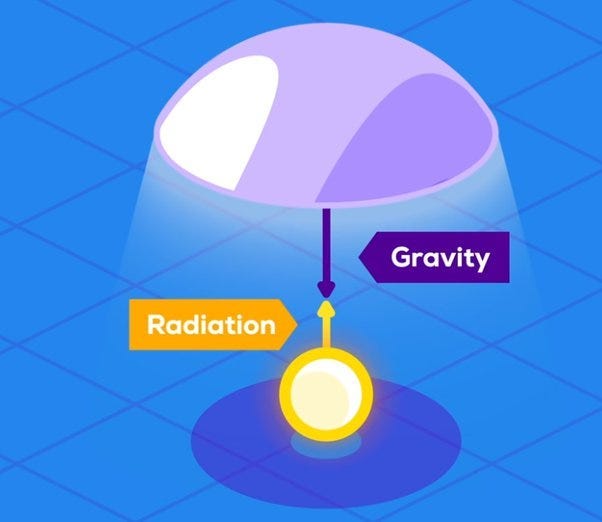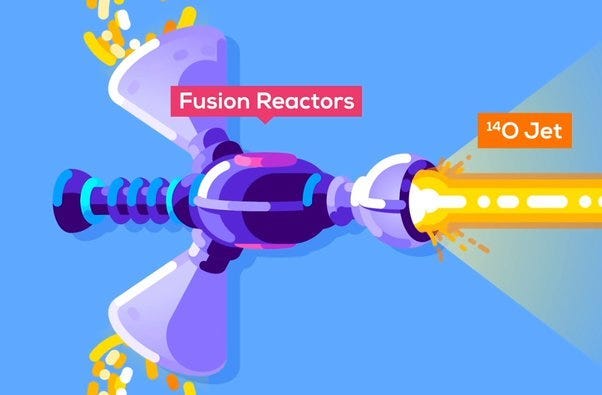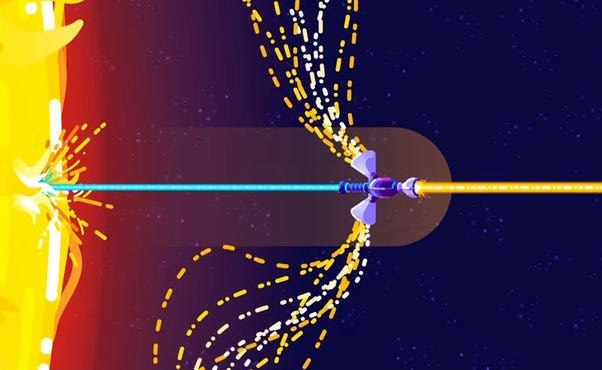Exploring the Future: Can We Prolong the Sun's Existence?
Written on
Chapter 1: The Star Engine Concept
Is it possible to extend the lifespan of our sun? A groundbreaking notion exists, promising numerous advantages. This concept revolves around a device known as the Star Engine—a megastructure designed to relocate the entire solar system, which inadvertently enhances the longevity of our star.
To achieve solar system relocation, the sun must be moved since all celestial bodies are gravitationally bound to it. There are two main types of machinery to facilitate this.
The first option is the "Shkadov Thruster," a massive parabolic mirror that reflects a significant portion of the star's emitted photons, utilizing their momentum to gradually propel itself in the opposite direction.

For optimal operation, the mirror should be positioned over one of the sun's poles to prevent potential damage to parts of the solar system. Consequently, the solar system can only be moved perpendicularly to the plane of planetary rotation.

(Note: Image dimensions are not to scale.)
The balance between the gravitational pull and solar radiation pressure keeps the mirror in place, allowing the solar wind to provide enough thrust to counteract gravity, thanks to its lightweight aluminum alloy construction.

With such a machine, the solar system could potentially traverse 100 light-years over approximately 245 million years—a notably slow pace.
A more complex yet speedier alternative is the "Caplan Thruster." This advanced system operates from a large solar-powered space station in conjunction with another megastructure, the Dyson Sphere.

The Caplan Thruster requires millions of tons of solar material every second to function effectively. To gather the necessary fuel, it harnesses hydrogen and helium from the solar wind and the sun's upper layers using robust electromagnetic fields.

However, solar wind alone does not suffice to power this star engine. A Dyson Sphere is essential for refocusing a portion of the sun's absorbed energy to specific areas on its surface. This process heats localized regions to extreme temperatures, expelling billions of tons of solar matter, which is then directed into the engine via electromagnetic fields.

Once inside the engine, the collected hydrogen and helium undergo separation. Helium is utilized in a nuclear fusion reactor, resulting in a billion-degree jet of radioactive oxygen as a byproduct. The expelled particles travel at 1% the speed of light, forming the primary thrust mechanism of this star engine.

Meanwhile, hydrogen is redirected back to the sun's surface after being processed and accelerated by the engine's magnetic fields. This reaction creates a counteracting force against the sun's gravitational pull.

The Caplan Thruster outpaces the Shkadov Thruster, enabling a star to traverse 50 light-years within a million years. In a span of 10 million years, it could provide complete control over the solar system's trajectory.

Such a structure could be developed by a highly advanced civilization aiming to sidestep potential cosmic threats, like a supernova. This innovation would turn our solar system into a colossal spaceship, unlocking fascinating possibilities. For instance, we could navigate the sun around the galactic center in reverse, exploring and colonizing various solar systems along the way—all while remaining tethered to Earth.

Ultimately, the answer to our initial question reveals an added bonus: extending the Sun's lifespan. Although the Caplan Thruster consumes vast quantities of solar material, this consumption is minuscule in relation to the sun's overall mass. Consequently, this diminutive mass loss allows the sun to burn its fuel more slowly, thereby prolonging both its life and the future of life on Earth by millions of years, while simultaneously enabling galactic exploration from our home.